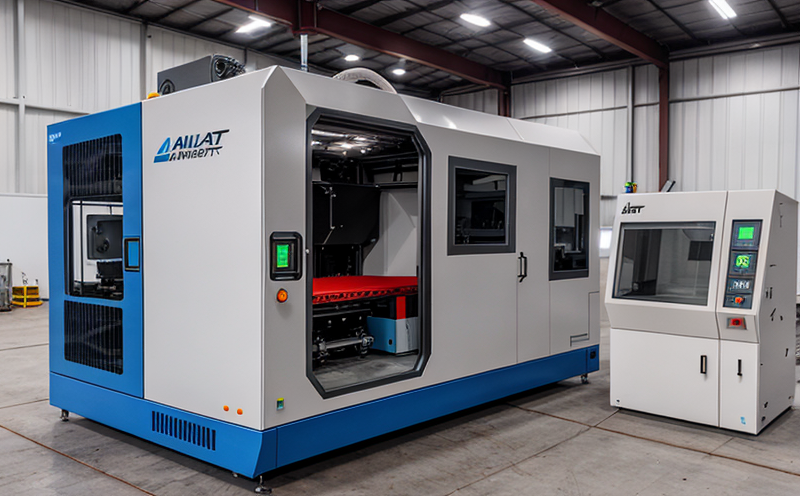ASTM F3365 Surface Roughness Testing of AM Plastics
The additive manufacturing (AM) industry has seen rapid growth in recent years, driven by advancements in technology and expanding applications across various sectors. One critical aspect of ensuring the quality and performance of AM parts is surface roughness testing, which can significantly impact functional properties such as adhesion, wear resistance, and friction behavior.
The American Society for Testing and Materials (ASTM) has developed ASTM F3365, a standard practice for measuring the surface roughness of plastic parts produced using AM processes. This standard provides a robust framework for testing to ensure that manufacturers meet stringent quality standards, which is particularly important in industrial manufacturing where precise specifications are non-negotiable.
The ASTM F3365 method utilizes a stylus profilometer or an optical profiler to measure the surface roughness of plastic parts produced by AM processes. The measurement process involves scanning over the part's surface and recording deviations from a reference plane, which is then analyzed according to predefined parameters such as Ra (average roughness) and Rz (maximum height).
The standard also specifies the use of appropriate sampling techniques to ensure that the measurement results are representative of the part's overall surface condition. This includes considerations for the orientation of the part, the location of critical features, and the selection of an appropriate scan area.
In addition to ensuring quality control during production, ASTM F3365 plays a crucial role in validating the performance of AM processes in real-world applications. For instance, surface roughness can influence how well a part adheres to another material or how it interacts with lubricants and other coatings. Proper testing ensures that parts meet not only aesthetic but also functional requirements.
The standard is particularly relevant for industries such as aerospace, automotive, and medical devices, where precision and reliability are paramount. By adhering to ASTM F3365, manufacturers can demonstrate compliance with international standards and ensure product consistency across batches and production runs.
Quality managers and compliance officers responsible for ensuring that products meet specified surface roughness criteria will find this standard invaluable in their role. R&D engineers can use it to refine processes and improve part performance, while procurement personnel can rely on it to verify that suppliers are meeting quality expectations.
Benefits
- Ensures Quality Compliance: ASTM F3365 provides a standardized approach to measuring surface roughness, ensuring consistent and accurate results across different laboratories and manufacturers.
- Promotes Product Consistency: By adhering to this standard, manufacturers can ensure that their products consistently meet the required specifications, leading to higher product quality and reliability.
- Enhances Process Control: Regular surface roughness testing using ASTM F3365 helps identify variations in manufacturing processes early, allowing for timely adjustments and improvements.
- Facilitates Regulatory Compliance: Adhering to this standard can help manufacturers meet regulatory requirements, thereby reducing the risk of non-compliance penalties and potential product recalls.
Industry Applications
The ASTM F3365 surface roughness testing is essential for several industries that rely heavily on additive manufacturing processes to produce complex parts. These include:
- Aerospace Industry: In this sector, precision and durability are critical, especially in components like engine turbines where surface finish can affect wear resistance.
- Automotive Industry: Surface roughness testing ensures that components such as gears or exhaust systems have the correct finish for optimal performance.
- Medical Device Manufacturing: The medical industry requires stringent quality control to ensure that implants and surgical tools meet safety standards. Proper surface roughness is crucial in preventing infection and ensuring proper functionality.
- Consumer Goods: For items like sporting goods or consumer electronics, a consistent finish can enhance the product's aesthetic appeal and user experience.
In each of these industries, ASTM F3365 provides a standardized approach to ensure that parts meet critical quality specifications. By incorporating this testing into their production processes, manufacturers can improve overall product performance and reliability, leading to increased customer satisfaction and market competitiveness.
Use Cases and Application Examples
The ASTM F3365 standard finds application in various scenarios within the additive manufacturing process. One key use case is during the development phase of new products, where R&D engineers can utilize this testing to evaluate different AM processes and materials for their suitability.
For instance, a manufacturer developing an aerospace engine component might use ASTM F3365 to assess how surface roughness affects wear resistance under high-pressure conditions. Similarly, in the medical industry, surgeons may rely on these test results to ensure that implants have the optimal surface finish for integration into patients' tissues.
Another application is in quality assurance during production runs. By regularly testing parts using ASTM F3365, manufacturers can detect any deviations from standard specifications early and make necessary adjustments. This proactive approach helps prevent batch failures and ensures consistent product quality across all units produced.
In addition to these practical applications, ASTM F3365 also serves as a valuable tool for compliance with international standards such as ISO 4287 and EN ISO 1302. These standards provide additional benchmarks that manufacturers can use when implementing ASTM F3365 in their testing protocols.
Real-world examples of successful implementation include companies like GE Addiive, which uses ASTM F3365 to ensure consistent part quality across its additive manufacturing operations. By adhering to this standard, they have been able to achieve higher levels of precision and reliability in their products.





